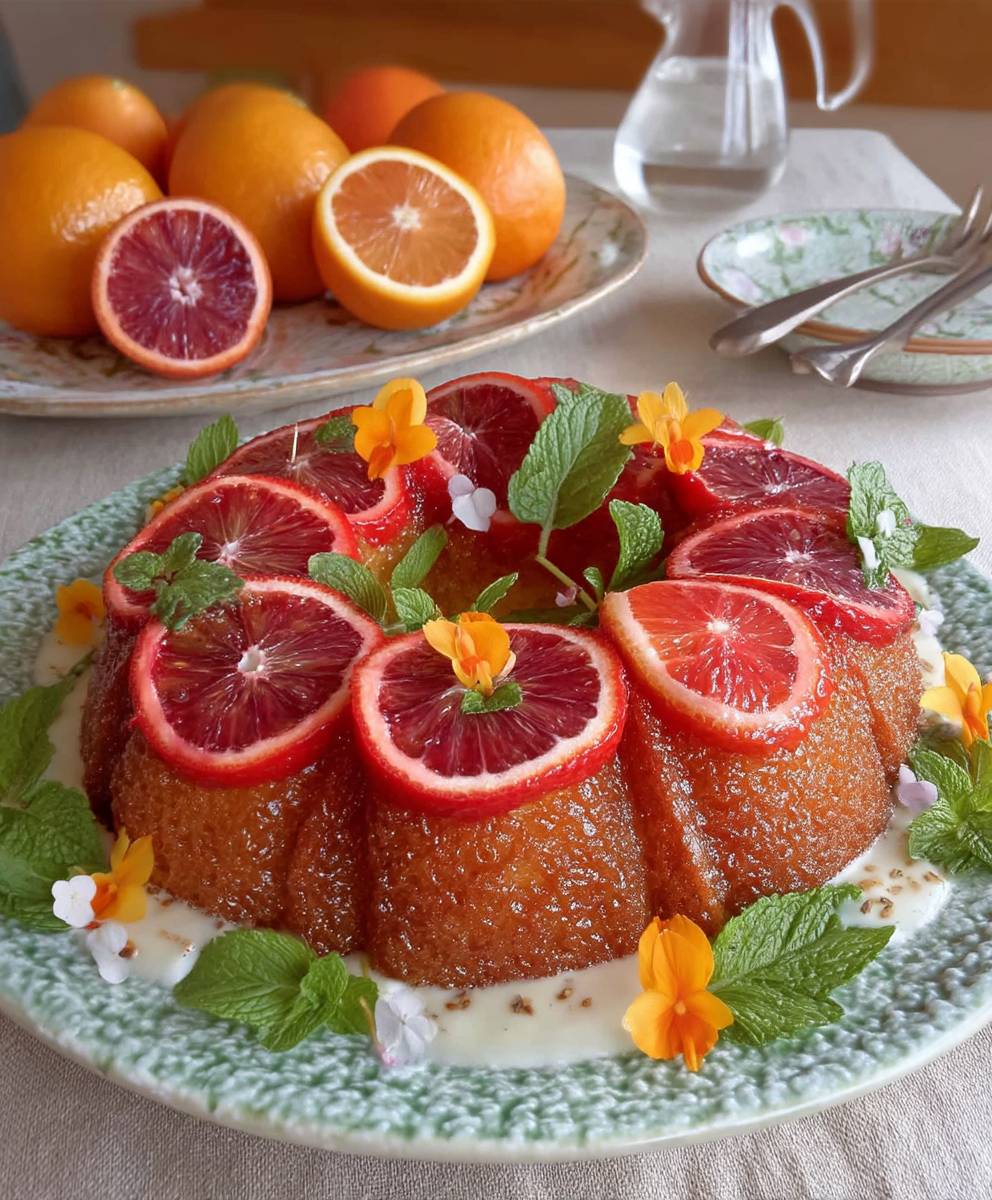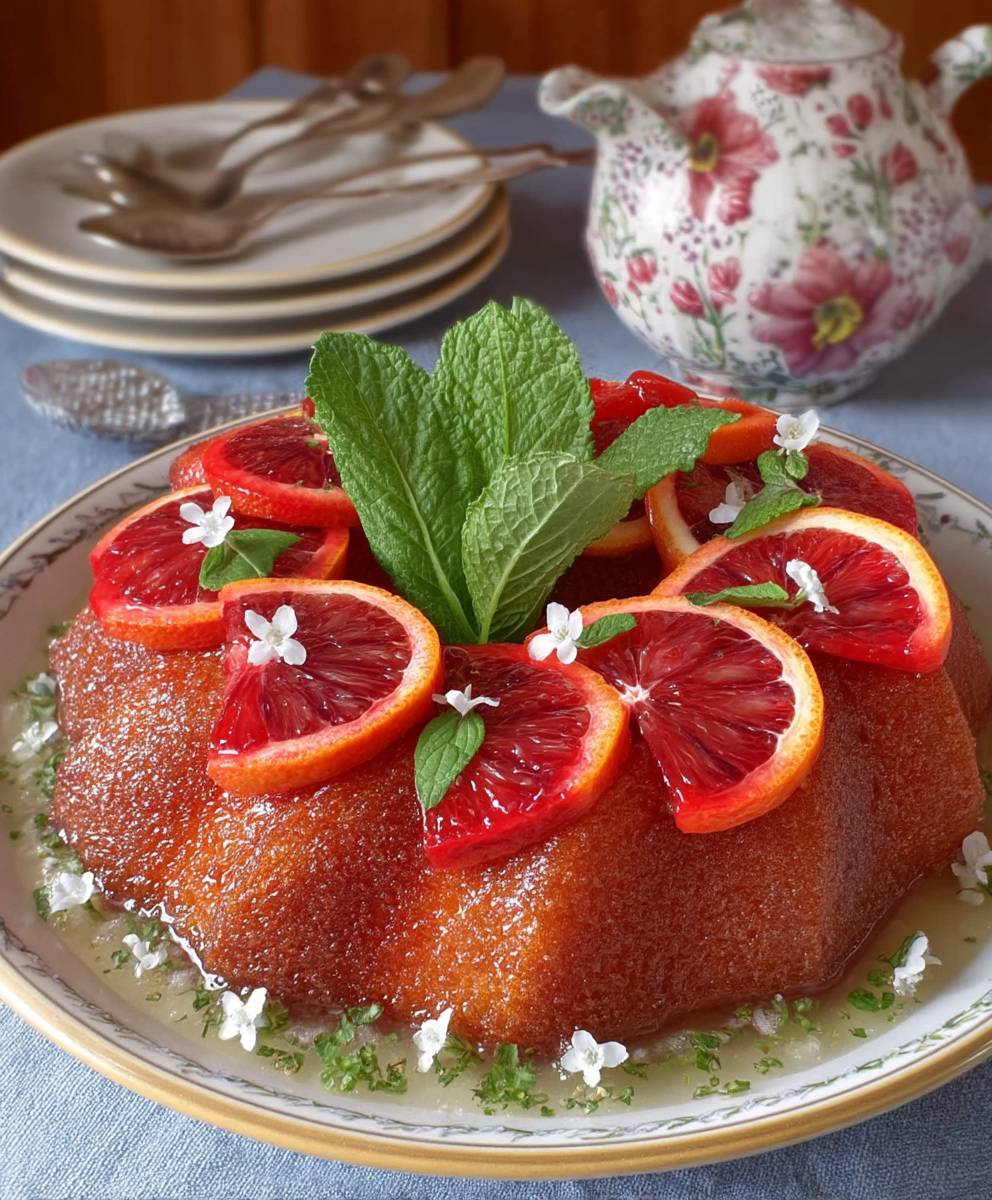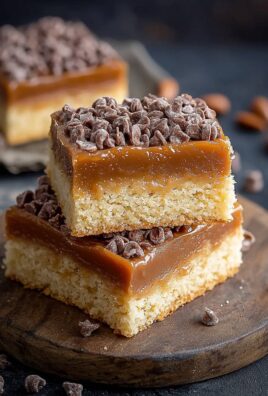Blood Oranges, with their dramatic crimson flesh and subtly tart-sweet flavor, are truly nature’s jewels. Have you ever sliced into an orange and been surprised by a burst of deep red, almost like a hidden treasure? That’s the magic of blood oranges, and today, I’m thrilled to share a recipe that perfectly showcases their unique character: Blood Orange and Olive Oil Cake.
While the exact origins of blood oranges are debated, they’re believed to have originated in Sicily, Italy, sometime in the 18th century. Their distinctive color comes from anthocyanins, pigments that develop when these oranges experience cool nighttime temperatures. This makes them a seasonal delight, typically available during the winter months, bringing a vibrant splash of color to our tables when we need it most.
People adore blood oranges for several reasons. Their flavor is a delightful blend of orange, raspberry, and a hint of tartness, making them far more complex than your average citrus fruit. The striking color also adds a visual appeal to any dish or drink. And when it comes to baking, like in this Blood Orange and Olive Oil Cake, they impart a moistness and a subtle, sophisticated flavor that’s simply irresistible. This cake is not only delicious but also incredibly easy to make, making it a perfect treat for any occasion, from a casual brunch to an elegant dessert.
Ingredients:
- For the Blood Orange Cake:
- 2 1/2 cups (300g) all-purpose flour
- 1 teaspoon baking powder
- 1/2 teaspoon baking soda
- 1/4 teaspoon salt
- 1 cup (2 sticks or 226g) unsalted butter, softened
- 1 3/4 cups (350g) granulated sugar
- 3 large eggs
- 1 teaspoon vanilla extract
- 1 cup (240ml) buttermilk
- 1/2 cup (120ml) freshly squeezed blood orange juice (from about 3-4 blood oranges)
- Zest of 2 blood oranges
- For the Blood Orange Glaze:
- 2 cups (240g) powdered sugar
- 4-6 tablespoons freshly squeezed blood orange juice (from about 1-2 blood oranges), plus more as needed
- 1 tablespoon unsalted butter, melted
- Pinch of salt
- For the Blood Orange Segments (Optional Garnish):
- 2-3 blood oranges
Preparing the Blood Orange Cake Batter:
- Preheat and Prepare: First things first, preheat your oven to 350°F (175°C). Grease and flour a 9×13 inch baking pan. I like to use baking spray with flour already in it for extra insurance against sticking, but good old butter and flour work just as well!
- Combine Dry Ingredients: In a medium bowl, whisk together the flour, baking powder, baking soda, and salt. Whisking ensures everything is evenly distributed, which is key for a light and fluffy cake. Set this aside for now.
- Cream Butter and Sugar: In a large bowl (or the bowl of your stand mixer), cream together the softened butter and granulated sugar until light and fluffy. This usually takes about 3-5 minutes on medium speed. Don’t rush this step! The creaming process incorporates air into the batter, which is essential for a tender crumb.
- Add Eggs: Beat in the eggs one at a time, making sure each egg is fully incorporated before adding the next. Then, stir in the vanilla extract.
- Alternate Wet and Dry Ingredients: Gradually add the dry ingredients to the wet ingredients, alternating with the buttermilk and blood orange juice. Begin and end with the dry ingredients. So, add about 1/3 of the dry ingredients, then 1/2 of the buttermilk and juice mixture, then another 1/3 of the dry ingredients, the remaining buttermilk and juice, and finally the last 1/3 of the dry ingredients. Mix until just combined. Be careful not to overmix! Overmixing develops the gluten in the flour, which can result in a tough cake.
- Add Blood Orange Zest: Gently fold in the blood orange zest. This adds a wonderful burst of citrus flavor and aroma to the cake.
Baking the Blood Orange Cake:
- Pour Batter into Pan: Pour the batter into the prepared baking pan and spread it evenly.
- Bake: Bake for 30-35 minutes, or until a wooden skewer inserted into the center comes out clean or with just a few moist crumbs attached. The baking time may vary depending on your oven, so keep an eye on it.
- Cool: Let the cake cool in the pan for 10-15 minutes before inverting it onto a wire rack to cool completely. Cooling it slightly in the pan helps prevent it from breaking.
Preparing the Blood Orange Glaze:
- Whisk Ingredients: In a medium bowl, whisk together the powdered sugar, blood orange juice, melted butter, and salt until smooth. Start with 4 tablespoons of juice and add more, one tablespoon at a time, until you reach your desired consistency. The glaze should be thick enough to coat the cake but thin enough to drizzle easily.
- Adjust Consistency: If the glaze is too thick, add a little more blood orange juice. If it’s too thin, add a little more powdered sugar.
Assembling and Garnishing the Blood Orange Cake:
- Glaze the Cake: Once the cake is completely cool, place it on a serving platter or cake stand. Pour the blood orange glaze over the top of the cake, allowing it to drip down the sides. You can also use a spatula to spread the glaze evenly.
- Prepare Blood Orange Segments (Optional): If you’re using blood orange segments for garnish, carefully peel the blood oranges, removing all the white pith. Then, use a sharp knife to segment the oranges by slicing along the membranes.
- Garnish (Optional): Arrange the blood orange segments on top of the glazed cake. You can also sprinkle some extra blood orange zest over the top for added flavor and visual appeal.
- Let Glaze Set: Allow the glaze to set for at least 30 minutes before slicing and serving. This will prevent the glaze from running too much when you cut the cake.
Tips for Success:
- Use Room Temperature Ingredients: Using room temperature butter, eggs, and buttermilk helps the batter come together smoothly and evenly, resulting in a more tender cake.
- Don’t Overmix: Overmixing the batter develops the gluten in the flour, which can make the cake tough. Mix until just combined.
- Freshly Squeezed Juice is Best: While you can use store-bought blood orange juice in a pinch, freshly squeezed juice will give you the best flavor.
- Adjust Sweetness to Taste: If you prefer a less sweet glaze, you can reduce the amount of powdered sugar.
- Storage: Store the cake in an airtight container at room temperature for up to 3 days.
Variations:
- Blood Orange Olive Oil Cake: Substitute the butter with a good quality olive oil for a more Mediterranean flavor.
- Blood Orange Poppy Seed Cake: Add 2-3 tablespoons of poppy seeds to the batter for a nutty flavor and interesting texture.
- Blood Orange Cupcakes: Bake the batter in cupcake liners for individual servings. Reduce the baking time accordingly.
- Blood Orange Cream Cheese Frosting: Instead of the glaze, top the cake with a tangy blood orange cream cheese frosting.
Why Blood Oranges?
Blood oranges are a variety of orange with a crimson, almost blood-colored flesh. They develop this unique color due to the presence of anthocyanins, pigments that are common in many flowers and fruits but not usually found in citrus fruits. Blood oranges are typically sweeter and less acidic than other oranges, with a distinct raspberry-like flavor. They are in season during the winter months, making them a perfect ingredient for adding a touch of sunshine to your baking during the colder months. Their vibrant color also makes them a beautiful addition to any dessert.
Serving Suggestions:
This Blood Orange Cake is delicious on its own, but it also pairs well with a variety of accompaniments. Serve it with a scoop of vanilla ice cream or a dollop of whipped cream. A cup of hot tea or coffee is also a perfect complement. For a more elegant presentation, serve the cake with a drizzle of blood orange syrup or a sprinkle of chopped nuts.
Enjoy!
I hope you enjoy this recipe for Blood Orange Cake as much as I do! It’s a simple yet elegant dessert that’s perfect for any occasion. The combination of the sweet and tangy blood orange flavor with the moist and tender cake is simply irresistible. Happy baking!

Conclusion:
This Blood Orange recipe isn’t just another recipe; it’s an invitation to experience a burst of vibrant flavor and color that will elevate your culinary creations. From the stunning visual appeal to the unique tangy-sweet taste, this recipe is a guaranteed crowd-pleaser and a delightful way to celebrate the season’s bounty. I truly believe that once you try it, you’ll find yourself incorporating blood oranges into your cooking and baking far more often.
Why is this a must-try? Because it’s simple, elegant, and delivers a flavor profile that’s both sophisticated and incredibly satisfying. The blood orange’s distinctive ruby hue adds a touch of drama to any dish, transforming the ordinary into something extraordinary. Beyond the aesthetics, the taste is a revelation a complex blend of orange, raspberry, and cranberry notes that will tantalize your taste buds. It’s a flavor adventure you won’t soon forget!
But the beauty of this recipe lies not only in its simplicity but also in its versatility. Feel free to experiment and make it your own!
Serving Suggestions and Variations:
* For a refreshing dessert: Serve the blood orange segments chilled with a dollop of whipped cream or a scoop of vanilla ice cream. A sprinkle of chopped pistachios adds a delightful crunch and nutty flavor.
* Elevate your breakfast: Add the blood orange segments to your morning yogurt or oatmeal for a burst of sunshine. The tangy sweetness pairs perfectly with the creamy texture.
* Create a vibrant salad: Combine blood orange segments with mixed greens, crumbled goat cheese, toasted almonds, and a light vinaigrette for a stunning and flavorful salad.
* Infuse your cocktails: Use blood orange juice to create unique and refreshing cocktails. It adds a beautiful color and a complex flavor that will impress your guests.
* Bake a masterpiece: Incorporate blood orange zest and juice into your favorite cake or muffin recipe for a citrusy twist. The vibrant color will also make your baked goods visually appealing.
* Make a marmalade: Turn the blood oranges into a delicious homemade marmalade. It’s a perfect addition to your breakfast toast or a thoughtful gift for friends and family.
* Blood Orange Glaze: Create a simple glaze for grilled chicken or fish by reducing blood orange juice with a touch of honey and soy sauce.
I’m confident that you’ll find countless ways to enjoy this versatile fruit. Don’t be afraid to get creative and experiment with different flavor combinations. The possibilities are endless!
So, what are you waiting for? Grab some blood oranges and give this recipe a try. I promise you won’t be disappointed. It’s a fantastic way to brighten up your day and impress your loved ones with your culinary skills.
And most importantly, I’d love to hear about your experience! Share your photos and stories on social media using [Your Hashtag] and let me know how you adapted the recipe to make it your own. Did you try any of the variations I suggested? Did you discover a new and exciting way to use blood oranges? I’m eager to learn from your culinary adventures and see the delicious creations you come up with. Happy cooking, and enjoy the vibrant flavors of blood oranges!
Blood Oranges: A Complete Guide to Varieties, Nutrition, and Uses
Moist and flavorful Blood Orange Cake with a tangy blood orange glaze. A perfect winter dessert!
Ingredients
- 2 1/2 cups (300g) all-purpose flour
- 1 teaspoon baking powder
- 1/2 teaspoon baking soda
- 1/4 teaspoon salt
- 1 cup (2 sticks or 226g) unsalted butter, softened
- 1 3/4 cups (350g) granulated sugar
- 3 large eggs
- 1 teaspoon vanilla extract
- 1 cup (240ml) buttermilk
- 1/2 cup (120ml) freshly squeezed blood orange juice (from about 3-4 blood oranges)
- Zest of 2 blood oranges
- 2 cups (240g) powdered sugar
- 4-6 tablespoons freshly squeezed blood orange juice (from about 1-2 blood oranges), plus more as needed
- 1 tablespoon unsalted butter, melted
- Pinch of salt
- 2-3 blood oranges
Instructions
- Preheat oven to 350°F (175°C). Grease and flour a 9×13 inch baking pan.
- In a medium bowl, whisk together the flour, baking powder, baking soda, and salt. Set aside.
- In a large bowl (or stand mixer), cream together the softened butter and granulated sugar until light and fluffy (3-5 minutes).
- Beat in the eggs one at a time, then stir in the vanilla extract.
- Gradually add the dry ingredients to the wet ingredients, alternating with the buttermilk and blood orange juice. Begin and end with the dry ingredients. Mix until just combined. Be careful not to overmix!
- Gently fold in the blood orange zest.
- Pour the batter into the prepared baking pan and spread it evenly.
- Bake for 30-35 minutes, or until a wooden skewer inserted into the center comes out clean or with just a few moist crumbs attached.
- Let the cake cool in the pan for 10-15 minutes before inverting it onto a wire rack to cool completely.
- In a medium bowl, whisk together the powdered sugar, blood orange juice, melted butter, and salt until smooth. Start with 4 tablespoons of juice and add more, one tablespoon at a time, until you reach your desired consistency.
- If the glaze is too thick, add a little more blood orange juice. If it’s too thin, add a little more powdered sugar.
- Once the cake is completely cool, place it on a serving platter or cake stand. Pour the blood orange glaze over the top of the cake, allowing it to drip down the sides. You can also use a spatula to spread the glaze evenly.
- If you’re using blood orange segments for garnish, carefully peel the blood oranges, removing all the white pith. Then, use a sharp knife to segment the oranges by slicing along the membranes.
- Arrange the blood orange segments on top of the glazed cake. You can also sprinkle some extra blood orange zest over the top for added flavor and visual appeal.
- Allow the glaze to set for at least 30 minutes before slicing and serving.
Notes
- Use room temperature ingredients for a smoother batter.
- Don’t overmix the batter.
- Freshly squeezed blood orange juice is recommended.
- Adjust sweetness of glaze to taste.
- Store in an airtight container at room temperature for up to 3 days.




